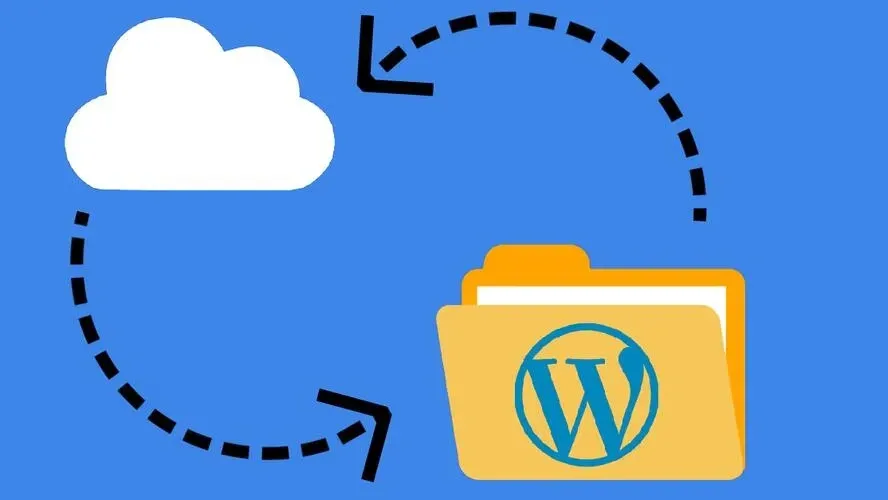If you’re a WordPress user, and haven’t heard of it yet, you will eventually hear that you will need to back up your WordPress website. You’ll probably scratch your head and wonder why you need to back up your site, and some people may not be able to explain it properly or even simply to you.
In this article you’ll learn what a backup is, why backups are important, how often you should backup your website, what WordPress backup plugins to use, and also how to easily backup your site.
What is a backup?
A backup is a copy of your website’s files and database. Your website's files include your images and uploads, your theme, your plugins, and even WordPress core files. The database includes things like your post and page content, theme and plugin settings, and other data that your site stores.
Your backup can either be stored on your web host, or you can download the backup to your computer or third party data storage (example: Google Drive, Dropbox, AWS.)

Caution: Please note that if you do generate backups and store them on your host, that you don’t store too many, especially if you have limited disk space. Additionally, some web hosts may have a Terms of Use policy to not store more than a specific number of backups. Usually, this policy is to prevent your account from accumulating so many backups that will eventually take up a lot of disk space on the server.
Why are backups important?
Your website costs time and money to make, so what happens when things go wrong? How can you make your website right again? Think of backups like a form of insurance, like car insurance. If you ran over a deer or got in some type of accident, insurance can help reduce the cost of damage or a hospital bill. Backups are kind of like that, but in this case, it’s insurance against things that could possibly go wrong with your website, like:
Your site gets hacked.
You made a mistake with some code, and your website is messed up.
Your site gets hacked
In the worst case scenario, and hopefully this never happens to your website, your site could show errors, or be corrupted where no one should visit it. Sometimes hackers will delete all of your files. Scary, right?
This is where backups are handy If you take backups regularly, and might know when the site started giving clues that it was hacked, you can simply restore the site back to before the hack, and then work to clean and secure your WordPress site website. This backup saves you some time from cleaning any corrupted code or malware, and gets your site running.
You made a mistake with some code, and your website is messed up.
Things happen. You could’ve updated a plugin, and it didn’t update as expected. Or you added or edited code, and made a mistake where the site is showing errors. A backup can help you restore the site to the version it was before your mistake, so you can continue working on your site.
WordPress Site backups: How Often?
When it comes to backing up your WordPress website, you will probably want to back up your site at least once a week. Honestly, if you’re working on your site almost on a daily basis, you should try to back up your site at least once a day.
If your web host offers backups or has a backup plan that you pay for, sometimes they will automatically back up your website on a daily basis. For example Verpex offers daily backups for their Cloud hosting and even hosting for WordPress. However, don’t always rely on your web host’s backups alone. Having that WordPress backup handy, could be a lifesaver, since technology is never 100% perfect.
WordPress Plugins for Backup

One of the best WordPress plugins in the market is Updraftplus. The free version is really simple, and easy to use. Out of the box, it will naturally start working, so you only need to install it and activate it. You can also create your own backups, outside of relying on the plugin’s schedule, or even set how often you want it to backup.
The backups can be stored on your web host and be downloaded from your WordPress admin area, under UpdraftPlus, or you can have the plugin send a copy of the downloads to your preferred digital download space.
How to back up a WordPress site
Below is a step by step process on how to back up a WordPress website using the UpdraftPlus plugin.
Step 1. Install UpdraftPlus from your Plugins section of your WordPress admin. You can look for “updraftplus”. The correct one is similar to the screenshot below.
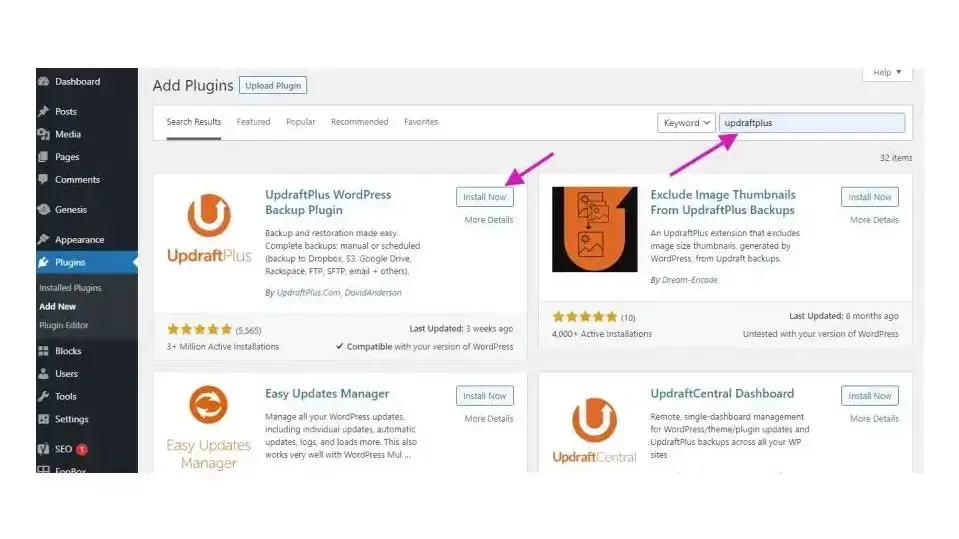
Step 2. Activate Updraftplus
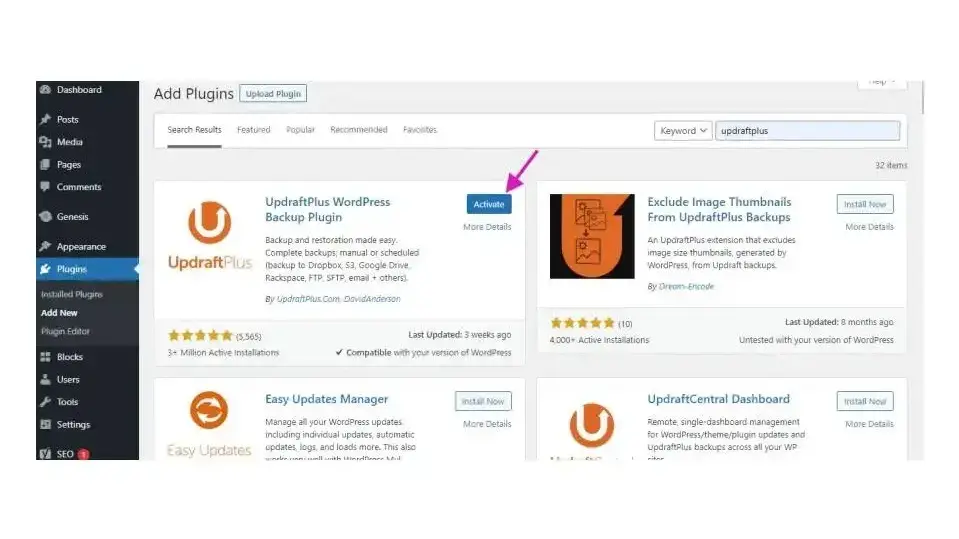
Step 3. Go to your Settings > Updraftplus Backups area, in your WordPress admin.
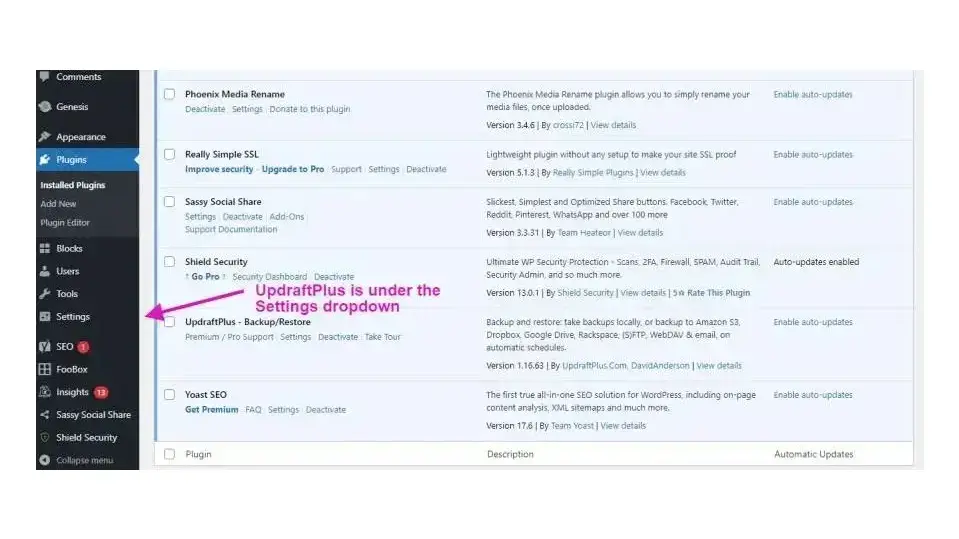
Step 4. Click on the big blue Backup Now button. After you do, you will get a pop up to ask you on what you’d like to backup. In a lot of cases, you don’t need to do anything other than click the Backup Now button on that popup.
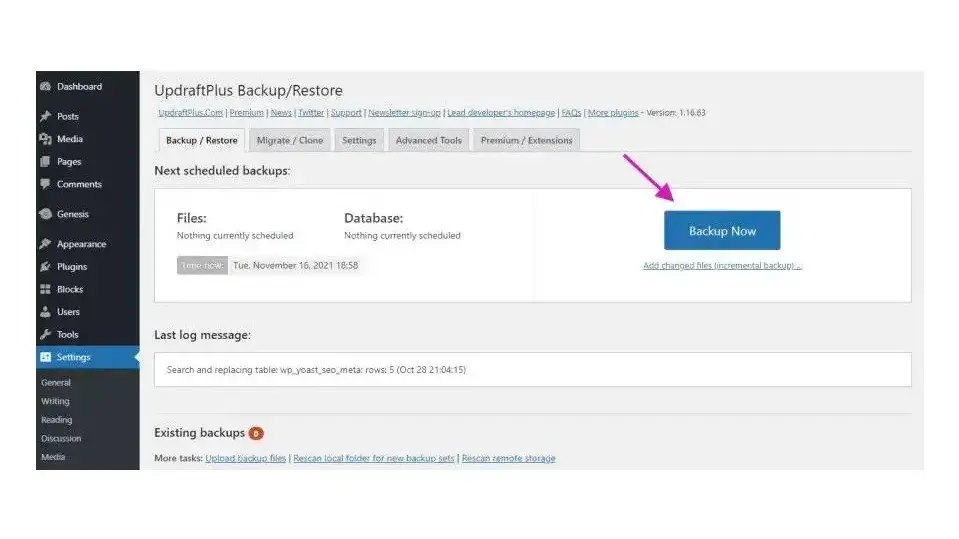
While the backup is running, do NOT exit out of the screen. Let the backup run. It’s also best not to make any new changes to your website while the backup is running.
Once the backup is done, usually there’s a little popup that tells you that the backup has completed.
All of the files and database that were backed up can be downloaded from the same dashboard screen that you backed up the site from, like in the screenshot below.
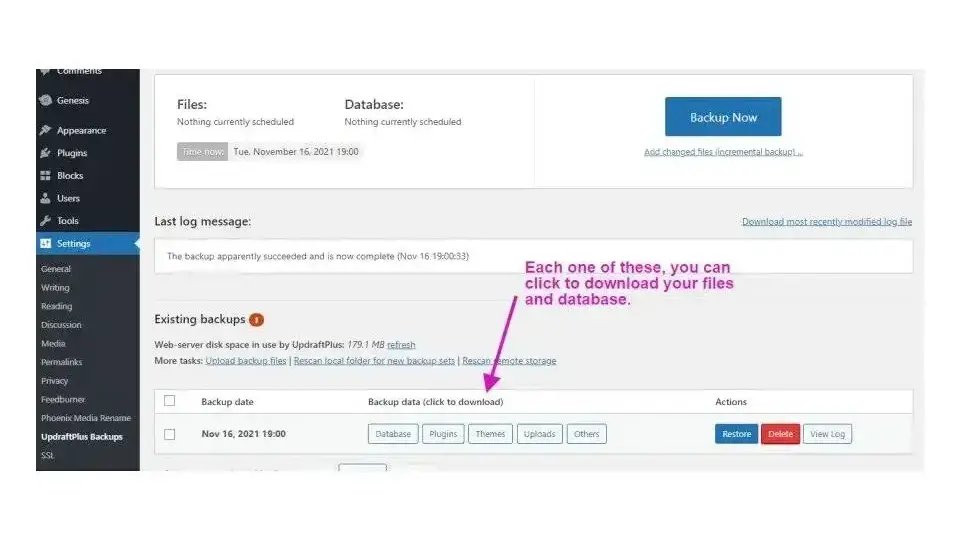
Seems simple, right? You won’t find a lot of WordPress backup plugins that try to keep it simple like Updraftplus, which is great for new WordPress users, or any user not really familiar with a lot of jargon about WordPress backups.
Please note that if the website has a lot of images, the backup may take longer to complete. In that case, just leave the window to the UpdraftPlus dashboard open, so it continues to generate a backup. You can go read a movie, surf social media in another browser window, or do something else, so you’re not stuck waiting for your backup to finish processing.
In Summary
Now that you know what backups are, why they are necessary, how often you need to back up your site, and even how to backup your WordPress website, you probably should get cracking on installing and creating your first backup file. The sooner you do so, the faster your site is insured from possible file or data loss, which would really suck if you make money from your WordPress website.
Frequently Asked Questions
Are your backups or Partial Backups?
We have full and partial backups in the cPanel, the steps to generate a full backup is stated in the link below https://kb.verpex.com/docs/how-to-restore-your-website
Where do you store my backups?
Our partnerships with various cloud providers, the best that’s available, means your backups are always safe and readily accessible. We don’t store them physically, so there’s zero risk of them being lost or compromised.
How long do you retain Backups?
Backups are kept for 30 days
Is there a money-back guarantee?
Yes, Verpex offers a 45-day money-back guarantee if you're not satisfied with your eCommerce hosting.
How long is WordPress migration?
A WordPress migration process should only take a few hours. This is valid for cases where there aren’t any technical issues that will affect the migration.
How do I transfer my WordPress site for free?
There are many WordPress Migration plugins that are free, including WP Staging, Duplicator, All-in-One Migration, WPvivid Backup, Migrate Guru, and many more.

Nile Flores is a long time professional blogger, as well as WordPress website designer and developer from the St. Louis Metro East. Nile blogs at NileFlores.com, where she’s passionate about helping website owners, whether they’re small business owners or bloggers. She teaches about Blogging, Social Media, Search Engine Optimization, Website Design, and WordPress. Additionally, Nile loves to speak at WordCamps (WordPress conferences) across the United States. When Nile isn’t knee-deep in coding, she’s a proud mom of a college student, and enjoys oil painting, cigar smoking, nail art design, and practicing traditional Okinawan kempo karate.
View all posts by Nile Flores















